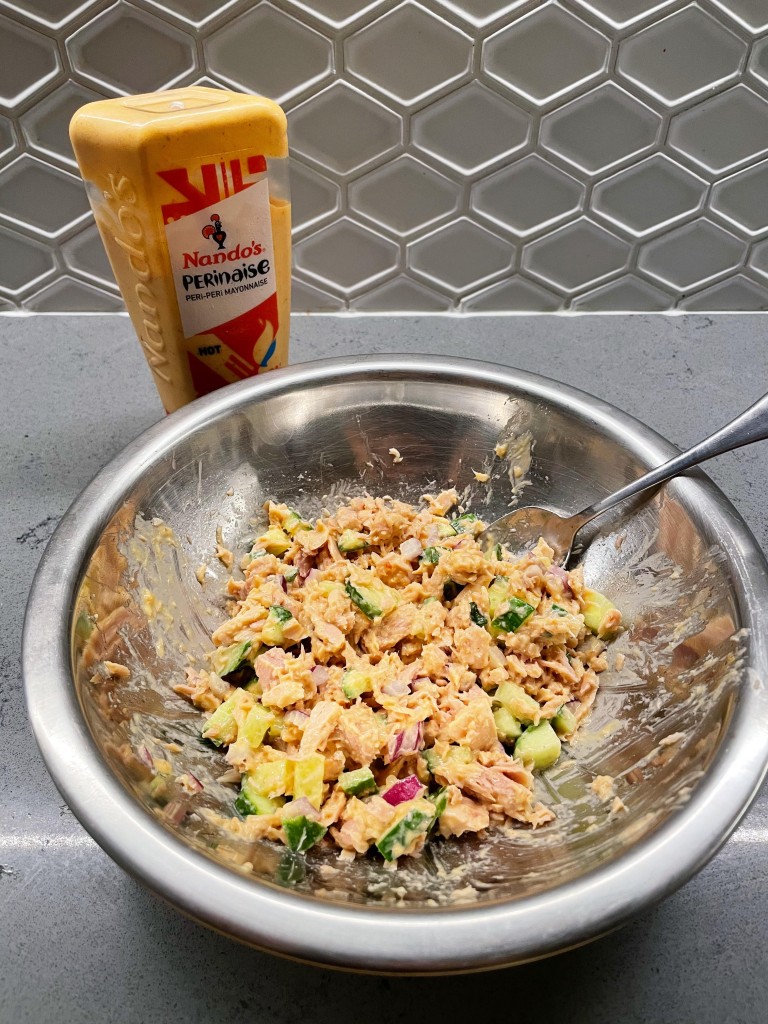
Not all food needs to look restaurant worthy to be beneficial for your health.
The above tuna salad used what was in the pantry and fridge, and made two sandwiches.
Ingredients:
- 2x Sirena Tuna cans (Basil infused flavour)
- 1x handful of diced red onion
- 1x handful of diced cucumber
- Nandos hot perinaise (1/3 the calories of mayonnaise)
Use the desired amount of perinaise, mix it all together, cover and leave in the fridge. Use it the next day to make a sandwich. I like to add some lettuce/spinach + tomato to add more vegetables to the sandwich. Additionally, this could be eaten just as a salad with additional greens or eaten with rice. The take home point is, this took under five minutes to prepare, and has sorted out two meals!
Enjoy!
James
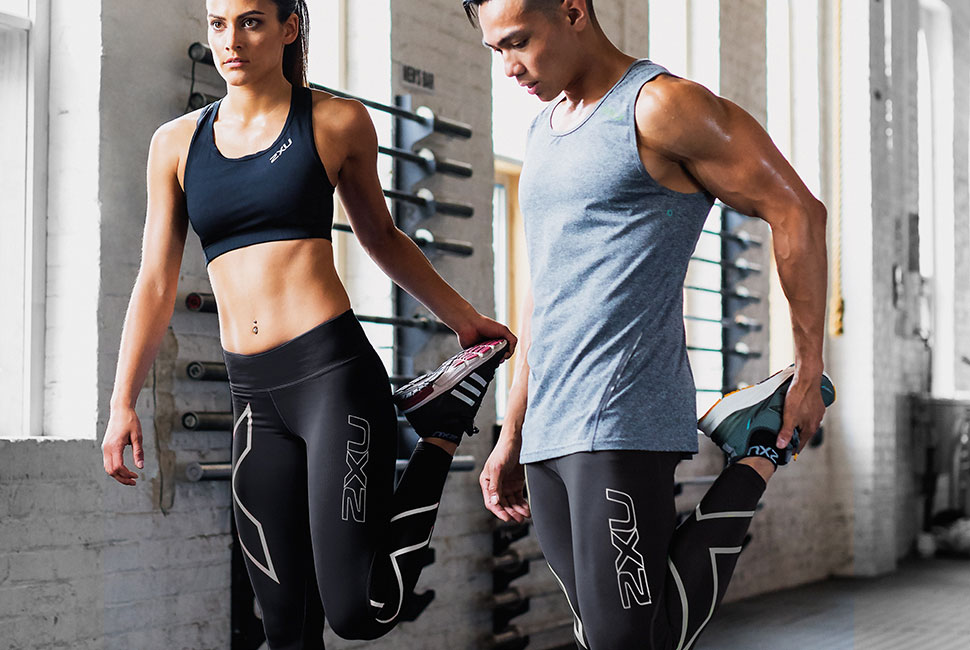
Compression wear – from the average gym goer and weekend runner, to the professional athlete. No doubt you’ve seen compression garments being worn plenty of times before. But how effective is compression wear for the non athlete? Is it just a fashion fad or is it a legitimate option for increased performance and recovery? We sat down with Australian Olympic team physio and runner Myles Burfield to discuss.
1. Are compression garments necessary for increased performance and recovery?
At the amateur level compression garments are not necessary, although they could be beneficial depending on your reasons for using them. From a recovery perspective their use is well supported in the research, and they’re used widely within the elite community for travel and improved speed of recovery post high intensity sessions. Their performance benefits are a little more controversial. Some very weak research suggests that their may be some performance benefits across a few different sports (cyclists, netballers, track athletes) although the size of the studies were small, and the improvements were not ‘statistically significant’. This means that they found small changes but after analysis it was not clear if these changes are due to true benefits from compression garments, or just natural differences between the groups (aka sampling error).
2. Are they relevant for the casual/semi casual runner, or only for professionals?
In all honesty, if you’re looking for performance benefits as a casual runner you’re unlikely to find them in your compression garments. Although one of the biggest issues for amateur athletes is they often don’t have the time or resources to do optimal recovery (massage, stretching, proper cool downs). Compression garments can really assist when used after long or hard training sessions, or especially when you are training on consecutive days. A good example for many runners would be racing on a Saturday, and then doing a long run Sunday.
3. In terms of recovery, when is the most optimal time to wear compression garments and for how long?
For recovery compression has been shown to work best when worn within 1 hour of exercising, and kept on overnight. If they are used during exercise benefits have been shown as early as 15minutes post exercise (decreased blood lactate levels in athletes wearing compression), although if you have been exercising without the garments then the priority is to cool your internal body temperature first (water immersion, rest, drinking cool water) before applying compression garments which could make it more difficult to get your body temperature down.
4. From your experience through the AIS, which brand of compression wear did you find the most effective?
The battle of the brands is mainly between 2XU and Skins, and unsurprisingly they have funded much of the research. The bottom line is that more compression gives you more benefits in circulation, although it is often less comfortable to wear for long periods. There are different levels of compression. These are measured in millimetres of mercury (mmHg). The higher the mmHg, the higher the compression:
8-15 mmHg = mild compression.
15-20 mmHg = moderate compression
20-30 mmHg = firm compression
30-40 mmHg = Extra firm compression
When choosing compression garments for sporting or everyday use I usually recommend moderate compression, and choosing the brand that is the most comfortable. If the garment is a good fit, and compression is applied evenly, it should feel comfortable and non-restrictive. We want increased circulation, rather than circulation blocks.
Myles Burfield was an Australian Olympic team physiotherapist at the Rio Olympics, and is also a director at Activate Health and Fitness. Myles is part of JS-PT’s network of health professionals who works with us and our clients for specialised physiotherapy needs.
 Recent studies have questioned the effectiveness of static stretching for performance and flexibility – do you believe this to be accurate and does static stretching still have a place in a runner’s program?
Recent studies have questioned the effectiveness of static stretching for performance and flexibility – do you believe this to be accurate and does static stretching still have a place in a runner’s program?
For years there has been an ongoing debate about the effectiveness of static stretching as preparation for physical activity. The reason for this debate is that some studies have found benefit from static stretching, while some research suggests it may inhibit performance and increase the risk of injury. From my experience it is very dependant on the athlete, and the type of exercise they are planning to engage in. For runners there are key areas where flexibility is imperative, and if you do not have the range of motion in these areas then stretching can be very beneficial in both improving performance and reducing the risk of injury. A good place to start is by ensuring that you have enough ankle dorsiflexion, and hip extension. The images below show the basic tests for these movements. To maintain good running form it is recommended you maintain 10 degrees of hip extension availability, and you are able to achieve 13cm on your ankle dorsiflexion knee to wall test.


How important is strength training for a long distance runner?
Strength is arguably more important than stretching when it comes to running. The forces going through your joints are 250% of your body weight when you jog, and even higher (>400%) when sprinting. To be able to withstand these forces you need a combination of foot, ankle, knee, hip, and core strength. The research suggests that “30-50% of runners will suffer an injury over the course of 12 months”, this is a scary statistic, and the main cause is a lack of running related strength. The 2 best ways to work on your running related strength is:
- Do specific gym exercises that focus on your running propulsion muscles (especially the claves)
- Build your running up slowly so that your body has time to adapt. Stick to the 10% rule and don’t increase you total weekly kilometres by >10% each week
How do you know when to prioritise strength or mobility/stretching?
“A tight muscle is a weak muscle” and for runners the need to stretch often implies as need to strengthen. The easiest way to know if an area needs strengthening is to do some strength tests with a trainer or physiotherapist, but for an easy test at home you should be able to do 30x single leg calf raises on each leg, with no rest. This is the minimum strength to be safe to run 5km regularly (>3 times a week). If your hip extension or ankle mobility are poor then the priority is to stretch these, and restore mobility, before you run. If these areas continually get tight then it’s a strong suggestion that they may need strengthening.
Myles can be found at Activate Health and Fitness as well as at our home at The Fitness Specialists in Milton. Get in contact via myles@activatehf.com.au.
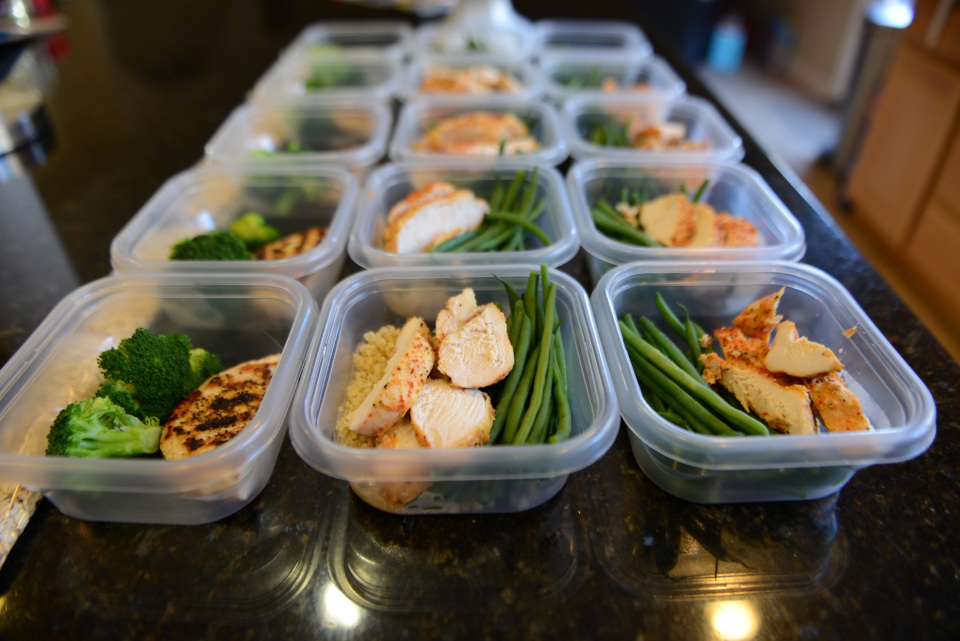
This month, we are excited to welcome back accredited dietician Serena Sullivan from Gather Nutrition. We were able to speak about food preps and kitchen staples, and whether or not preparing foods in advance was the only way forward in terms of improving one’s diet. Without further ado:
As a dietician, do you feel as though the practice of preparing food days in advance is the best way to ensure dietary compliance?
Personally, I am much more successful consuming a healthy, well rounded diet when I spend 20-30 minutes each night preparing meals/snacks as opposed to preparing them all in one go. I feel big batch cooking and a fridge full of tupperware containers can look and feel like ‘dieting’. Some people may be able to do that for a short period of time before they either become bored or they fall off the wagon due to not finding the amount of time required on a weekend.
Can cooking foods in bulk at times be a daunting prospect for someone trying to improve their eating habits?
In my experience, very much so. People can often find bulk prepping quite daunting. Many have good intentions when they set the goal of setting aside time on the weekend to do the planning, shopping, and preparing, but due to the hours this may take, it can be a challenge at times depending on the demands of family/social commitments and the like.
In saying that I have also seen clients who have made it a genuine part of their lifestyle and have sustained it for an extended period! It depends on what will suit your needs and what is a sustainable approach for ongoing success.
What are your favourite staple ingredients to include in your 20-30min prep each night?
My favourites to prepare at night will be a small container of full fat plain greek yoghurt and either a whole fresh piece of fruit or chopped fruit. I’ll always pack a variety of nuts and seeds which sometimes I’ll add to the yogurt or have separately. Its simple but you can’t go wrong with fruit and nuts. This makes for an easy snack throughout the day. I try to buy a few different types of fruit for the sake of variety.
I scale our dinner shopping to serve 4-5 people (only 2 people at home) so there is always left overs for lunches the next day. I’m always sure to have frozen vegetables, microwave rice, wholegrain bread, and some type of salad mixture, that way if dinner left overs are short on vegetables or a carbohydrate source, I can turn to these options to prepare a complete and substantial meal. Having the salad and wholegrain bread on hand usually means I will always have ingredients for a last minute salad sandwich with any vegetables if need be.
How do you ensure your clients are eating the correct portion sizes?
Whilst I educate my clients on serving sizes, I put more emphasis on making sure they are consuming enough food as opposed to food restriction. I put the biggest emphasis on the serving sizes of vegetables and try to encourage increasing vegetables servings. At the end of the day I want people looking at their meal and asking if they can see twice the amount of vegetables than they can see of protein or carbohydrates. If a meal is primarily vegetable based, it will always be nutritious and naturally lower in energy. Encouraging people to start thinking about increasing their vegetable intake (as well as increasing their intake of different varieties of vegetables) will mean they will naturally start to reduce in other areas where they may be over consuming.
I will however speak more specifically about carbohydrate serving sizes with clients who have particular health conditions, such as diabetes or insulin resistance. As a general rule of thumb, I try not too do too much food policing to give clients space to make changes on their own terms!
The Final Word with James:
Remember what may work for others is not necessarily the best option for you. Whether you are preparing your food days in advance in one hit, or doing a little preparation each night, the important thing is to have a plan of sorts. Write down some meals which you can cook, but be sure to pack your kitchen with some staples (think frozen vegetables, canned goods, microwaveable rice/couscous/quinoa, eggs, mixed leaf bags from the supermarket) incase your best intentions don’t come to fruition.
Follow Serena on Instagram @gathernutrition for more great tips!
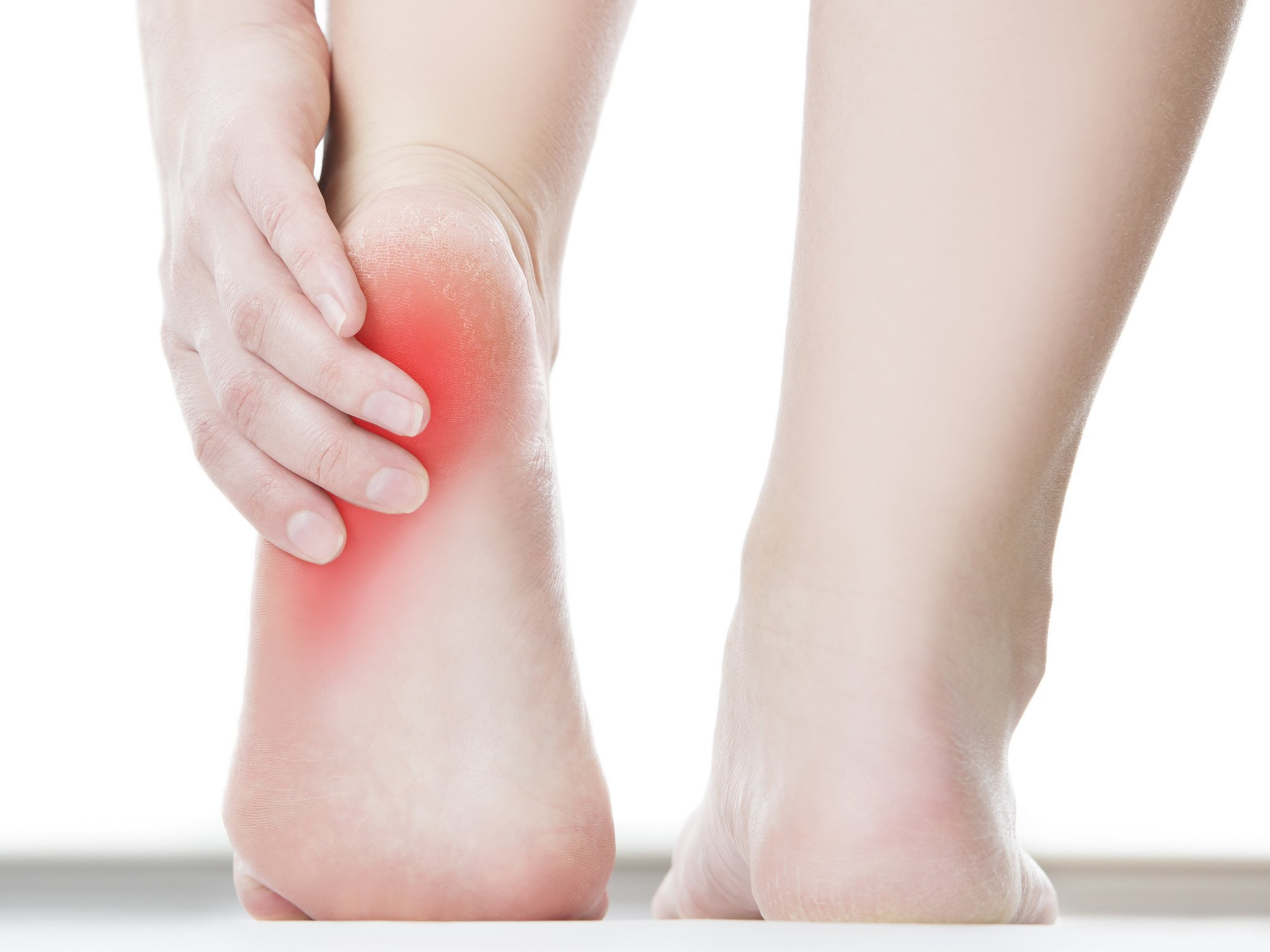
Hello again to the readers of the JS-PT Blog. I felt very honoured to be asked to write another article for you, this time delving into the all too common complaint of plantar fasciitis related heel pain (also referred to as fasciopathy, or fasciosis). In my 6+ years as a practising Podiatrist, I can confidently say that pain under the heel can be a very common issue with a number of possible causes, making it quite handy to have a professional on your side when it comes to treatment. With that in mind, this article, although not exhaustive, will hopefully give you a brief insight into this complex condition and provide some general information regarding treatment. Also, don’t forget to check out our video on the JS-PT Instagram on two quick ways you can directly mobilise the plantar fascia by way of massage and fascia release.
What is plantar fasciitis?
Plantar fasciitis is generally considered to be an overuse condition affecting the strong band of connective tissue (called the plantar fascia) that runs from the front of the heel to the ball of the foot. The role of the plantar fascia is to help to provide support when we’re up on our feet. Normally, the fascia is able to its job without any dramas however in some cases, overstretching and micro-trauma can occur, resulting in pain. This pain is often described by my patients as a sharp pain in the heel after rest (such as getting out of bed or after sitting/lying down), which then gradually dissipates as they “warm up”.
At this point, I think it is important to note that more than one diagnosis is possible for pain around the heel making adequate assessment from a health professional key.
How is it caused?
As plantar fasciitis is an overuse injury, it can theoretically be caused by anything that places excessive strain on the plantar fascia. As a result, common risk factors seen in practise are as follows (this list is not exhaustive):
- Increased BMI (body mass index)
- Poor foot and lower limb mechanics (such as having flat or high-arched feet)
- Wearing unsuitable footwear
- Occupation-related stresses (e.g. excessive periods of sitting or standing)
- Muscle tightness or imbalances
- Pregnancy
In addition, the onset of pain may correlate to a lifestyle change, such as new shoes or the alteration of a training program and exercise levels.
Can this affect the rest of my body?
You bet it can! As a lot of you would know, foot pain is incredibly frustrating as it affects us with every step. Our body, being the intuitive machine that it is, will try and avoid this pain by way of limping or altering its posture to reduce load from a particular structure (you may see where I’m going with this).
Prolonged foot pain can lead to compensatory action from other areas, changing your lower limb mechanics and possibly causing secondary pain in your ankles, shins, knees, hips, or lower back. It can also work the other way around. The cause of your heel pain can sometimes be due to something occurring higher up such as core and/or glute weakness, or misalignment of the lower leg – it’s a two-way street!
What about treatment?
There are a number of different treatment strategies available for plantar fasciitis. For example, some of the conservative treatment techniques available include:
- Rest and icing to manage symptoms
- Specially prescribed stretches
- Mobilisation and massage from a suitably qualified health professional
- At home self-treatments
- Strengthening exercises
- Certain strapping/taping techniques
This list is not exhaustive and some of the techniques above may be more suitable than others depending on the underlying cause. As a result, I would really like to emphasise that plantar fasciitis and heel pain can be complex in nature, with a variety of factors involved in its onset. This is why making an appointment with a Podiatrist is highly recommended as a more in-depth biomechanical assessment can be performed. This not only ensures that the correct diagnosis is made, but a suitable individualised treatment plan may be devised. Moreover, some people require additional support through an orthotic device to help improve function of the foot and lower leg.
For your health and wellbeing:
Remember, a person’s health and circumstances are unique. This information is general in nature and is not intended to replace individual professional advice or the opinion of your medical practitioner. Always seek the advice of a qualified health professional before making any decisions about your health.
Reference:
Brukner, P., & Khan, K. (2012). Clinical Sports Medicine (4th ed.). McGraw-Hill Professional Publishing.
Special thanks to Matt McKean and InStep Podiatry for the special guest blog. For specialist podiatry appointments, find them here.
For more information on training with the team at JS-PT, email us at info@js-pt.com.au.
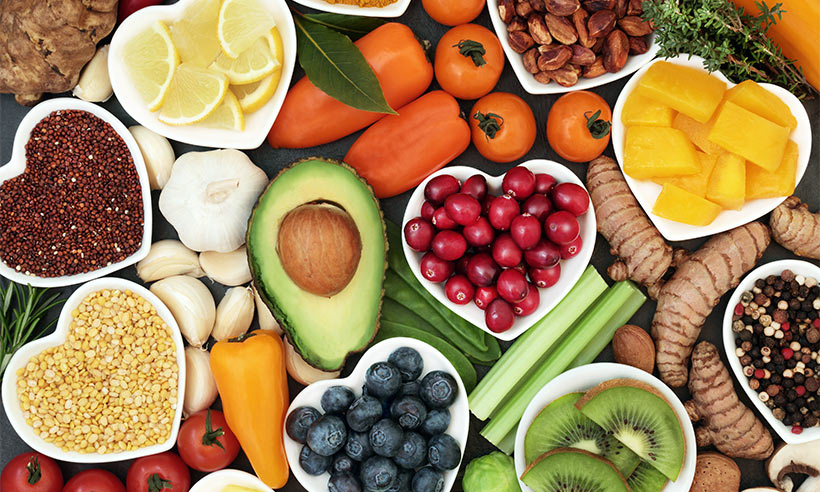
‘Veganism’. A word which is the catalyst for many debates and let’s face it, some pretty hilarious memes. However, as you have probably all noticed, the vegan lifestyle is becoming more and more popular and there seems to be an increased awareness across the board. Hopefully what follows will give you a brief insight into my life as a vegan and the effect it’s had on me, physically and mentally.
My Transition
I became vegan on the 11th of August, 2015, and I have to say it all happened pretty organically. My partner had been a vegetarian for approximately two years so my consumption of animal products had naturally reduced over that duration – but meat, eggs and dairy still made up a fair bit of my diet. She asked if I would be interested in watching a documentary called ‘Earthlings’ which looking back, was probably what started the transitioning process. I’m not going to go into the discussion of ethics – we’ve all seen the videos and anyone with an ounce of compassion can appreciate the moral justification behind veganism. Instead, I’d more like to focus on the health benefits of a plant-based diet, as this was a huge driving factor with me wanting to becoming one of those crazy extreme vegans. After viewing the documentary, I immediately dove into researching the health benefits of a vegan diet and that was “all she wrote”.
Current Diet
Now fast-forward almost 3 years and I couldn’t be happier. Now, I don’t want this article to turn into a solo episode of “This Is Your Life”, because to be honest I could talk about this stuff all day. Instead, I’ll choose three of the more significant diet-related points regarding my experience thus far with veganism.
- Micronutrients – the bottom line is that plant-based diets, when done correctly, will always result in eating a larger variety of foods. More experimentation takes part in the kitchen, more enjoyment is had with cooking, and as well as being very tasty, the meals are more colourful – and more colour means more nutrients! For example, when you’re meeting your protein requirements with foods such as beans, legumes, grains, nuts, seeds and vegetables rather than beef, chicken or fish, it’s pretty safe to say that you’re meeting many other nutrient requirements as well. Long-term, this sets you up for a far healthier and problem-free life, as you reduce your risk of chronic disease. For example, 28% of deaths in the year 2016 in Australia were a result of heart disease. A very significant factor of heart disease is atherosclerosis – the thickening and hardening of vessel walls – and a major cause of this is high cholesterol. But how many people know that dietary cholesterol solely comes from animal products, and that your liver produces enough cholesterol alone for normal bodily function? For me, the proof was in the pudding when, out of curiosity, I had a blood test in February of this year. My results were perfect, and my doctor was pretty impressed. Also, another fantastic change is that I haven’t been sick since becoming vegan, at all.
- ‘Feeling healthier’ – I have a very clear memory of 2014. I was in a ‘bulking’ phase and was consuming around 4000 calories each day. I have always strived to be the healthiest I can be, so even during this phase I was still eating plenty of vegetables and wholefoods. However, I still felt so crap. Every meal was a bigger struggle than leg day, and I was pretty lethargic the entire day. It was hard! Fast-forward to now and eating that same number of calories is entirely different. There is a noticeable difference with bloating and lethargy, and I’m generally more energetic. It’s hard to explain, but I honestly just feel healthier.
- Travelling and eating out – this is something a lot of vegan’s struggle with, but I’ve never really had a problem. Since being vegan, I’ve travelled to over 20 countries with my partner and we’ve never had an issue (thanks to wonderful apps such as HappyCow). Also, almost every restaurant has vegetarian options, and it’s never a difficult task to make these choices vegan-friendly – such as swapping out an egg or dairy product for a suitable alternative. What upsets me is hearing of complaints from the vegan community about restaurants NOT having enough vegan options. At the end of the day, veganism is in it’s infancy, and recognition on a menu in the form of a meal labelled as “Vegan” or “Vg” is a total win in my books. Recognition = awareness, and that’s the beautiful thing.
Current Training and Physical Changes
Training progress, body composition and my style of exercise have also all changed quite considerably. In addition to continuing compound strength training, I now incorporate a lot more gymnastics movements and bodyweight training into my regime and am thoroughly enjoying it. All of my personal bests for bench press, deadlifts and barbell squats have improved considerably, and I have learnt new skills such as handstands and ring muscle-ups. Could I have still achieved this as a meat eater? Probably. But, nothing feels better than going to the gym full of energy (which I didn’t always experience as a meat eater) and feeling like you can conquer anything. Also, it feels great to somewhat prove people wrong. Vegans cop a lot of flak and are always being targeted as ‘protein deficient’ or ‘malnourished’, but I’ve experienced more strength and muscle gain than ever before.
I would like to point out that I am not an expert on veganism and don’t claim to be. As I said, I strive to be well-educated and due to this point, my knowledge on diet and training is forever expanding. Also, my journey with veganism and the positive results I have experienced are just that – mine. Any diet can be done incorrectly, and individuals need to be well-educated with whatever it is they choose to consume.
Thanks so much for reading,
Matt
For information on training with Matt, contact us info@js-pt.com.au or PM us through our socials (Facebook, Instagram). For great content including vegan recipes and training videos, Matt can also be found on Facebook and Instagram.
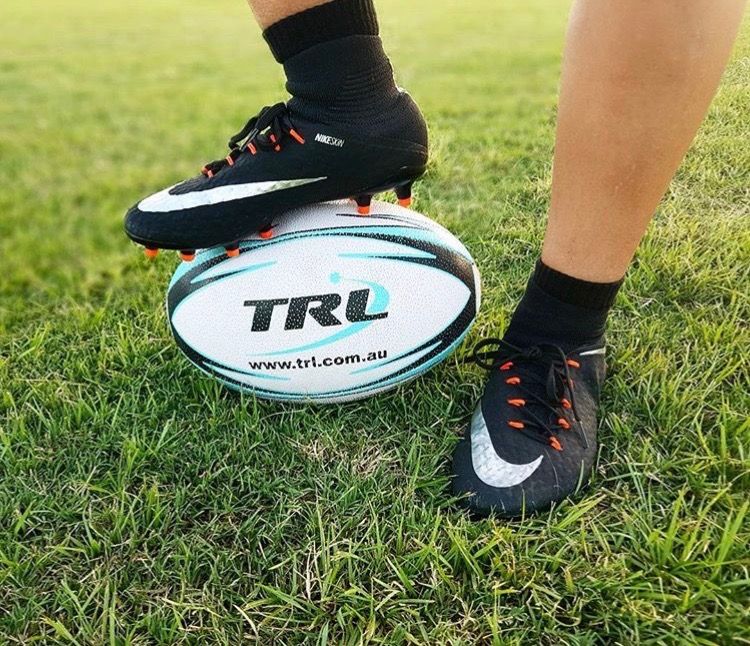 Whilst strength training sets the foundation for fitness, doing so in a gym or with a personal trainer is not the only physical activity you should do to stay healthy, but rather should be part of a wider active lifestyle. Making physical activity an easy part of your daily routine – like cycling on your commute to and from work, for example – or taking it up as a social activity – like weekend hikes or playing a social sport – should also be considered as part of this active lifestyle.
Whilst strength training sets the foundation for fitness, doing so in a gym or with a personal trainer is not the only physical activity you should do to stay healthy, but rather should be part of a wider active lifestyle. Making physical activity an easy part of your daily routine – like cycling on your commute to and from work, for example – or taking it up as a social activity – like weekend hikes or playing a social sport – should also be considered as part of this active lifestyle.
When it comes to social sport, combining fitness with socialising with friends or work colleagues has its benefits both physically and mentally. Social sport gives your training schedule variety and also promotes social health by spending time with friends and meeting new people.
On a personal note, I have been playing Touch Rugby League (TRL) for a number of years as my social sporting competition of choice. More recently, I’ve started working more closely with TRL through JS-PT on corporate health programs as an addition to group training sessions.
To speak more about the benefits of playing social sport and playing TRL in particular, we invited Chairman of TRL Tom Longworth to feature in this month’s JS-PT news:
Touch Rugby League (TRL) was founded in 2005 and has always been a social-sport at heart. Whilst we do offer very competitive and elite pathways, at the heart of our offering is providing teams the chance to exercise and get fit, but in a social context. TRL provides a great opportunity for people to meet others and has been an avenue through which thousands of Corporate teams have built upon team spirit and camaraderie.
Whilst physical health is important, so is mental health and a big part of that is maintaining healthy relationships with friends, family and work colleagues. In reality, we all spend more time with work colleagues than just about anyone so being able to relate to one another in a work context, and to have a strong bond (built on trust and respect) plays a key role in mental health.
TRL provides a great opportunity for people to engage, to develop a sense of trust, respect and teamwork on the field all whilst having fun and of course keeping fit. Strong relationships make for a better workplace.
With multiple locations across Brisbane (and Australia), it has always been straight forward finding competitions to enter, and also has helped me implement more cardiovascular training into my week! For more information on any of the above, please feel free to contact Tom directly by emailing tom@trl.com.au or by visiting the website.
Until next time,
James
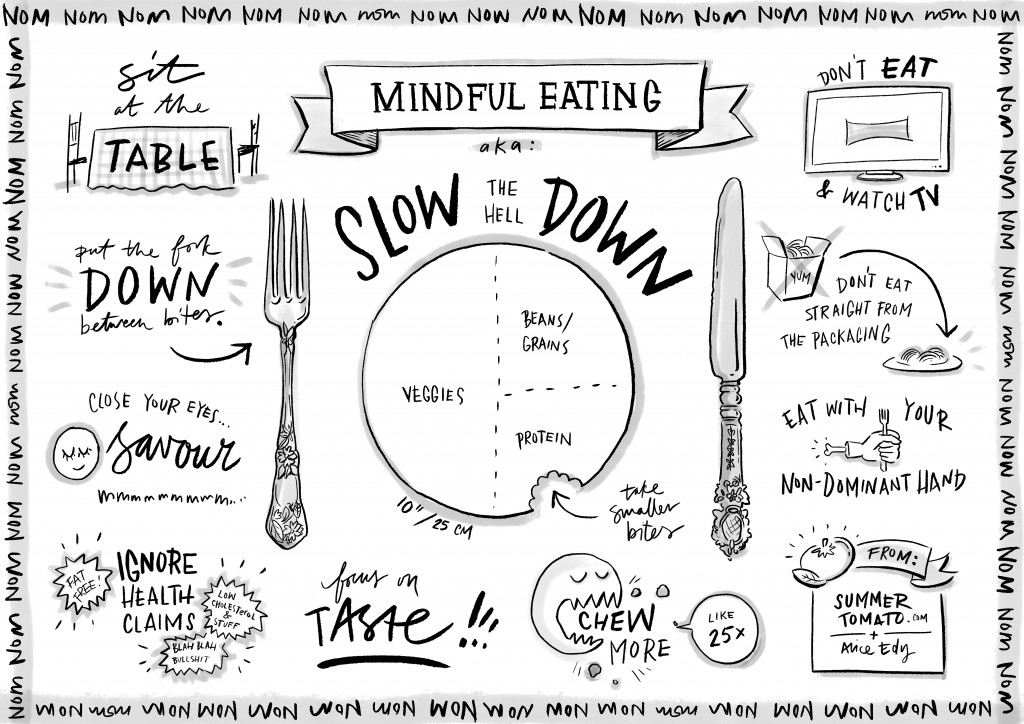
Mindful Eating – I’m sure you’ve heard the term, but do you feel like you’ve really grasped the concept? These days the term ‘Mindful Eating’ has somehow found its way into diet and weight loss programs around the world. Yet using mindful eating as as weight loss tool actually goes against what the practice of what mindful eating is truly about. Let’s break this down.
So what is Mindfulness?
Mindfulness is all about deliberately paying attention, non – judgmentally to your thoughts, emotions and physical sensations in the present moment. It’is purpose is to help free yourself of reactive, habitual patterns of thinking, feeling and acting. It is about balance, choice, wisdom and acceptance of what is.
Ok, so how does Mindful Eating fit in?
Mindful eating involves the act of non-judgmentally acknowledging your hunger and fullness cues to guide your decisions of when to begin and finish eating foods, and eating with awareness of all of your senses – sight, sound, touch, taste and smell. It helps to develop non-judgemental responses to food (likes, dislikes, neutral) while allowing yourself to become aware of the positive and nurturing opportunities available through food selection and preparation. It is a tool to learn which foods will best satisfy your hunger.
Why is it not for weight loss?
As you can see, the core purpose of mindful eating is to eat without judgement guided by your internal hunger and fullness cues. Practicing mindful eating with the intention to lose weight means that you are entering the eating occasion with expectation and judgement – to lose weight. If those expectations aren’t met, generally feelings of failure arise – which more often than not lead back to partaking in another behaviour for weight loss – which is a classic example of the diet cycle.
So how can Mindful eating help?
Eating is a behaviour and behaviour change is hard! You can follow a meal plan or pay someone to dictate to you what to eat until they are blue in the face, but at the end of day you have to learn to eat for YOU. Improving your eating behaviours is not about weighing less for a moment in time, but about learning to eat well for the rest of your life. Mindful eating can assist this in this in a number of ways:
• Reconnecting with internal physical hunger and fullness cues: We were all born with the ability to regulate our hunger and fullness internally, but as we get older and life gets busier these cues get interrupted by our environment (i.e. increased stress, working shift work, designated eating times, being preoccupied with work,). By bringing awareness to your body’s sensations around hunger and fullness, mindful eating can help you reconnect with this innate ability we are all born with.
• Reduce Non – Hungry Eating: As natural cues to hunger and fullness are explored mindful eating can help you to identify any instances of non hungry eating (i.e. eating because you are bored, stressed, depressed, lonely, procrastinating or just because it is there). Recognising these occasions is the first step to behaviour change and allows you to explore other remedies for non-hungry eating than food.
• Reduce Overeating: Awareness during eating is also key to mindfulness practice. Combined with hunger-fullness awareness this allows us to notice when a food ceases to be as palatable or as enjoyable, helping to determine when satisfaction has been reached. This is called the ‘Law of Diminishing Pleasure’.
• Increase confidence around foods we feel powerless around: We all have them, those foods that we don’t keep in the house because we don’t trust ourselves around them. Avoidance is a short term solution but long term it’s important to feel confident that you can be around certain foods without going crazy. When eating for ‘pleasure’ over ‘fuel’ – which is totally ok to do, practicing mindful eating can help us to determine when our pleasure/sensory needs have been fulfilled. For example you may buy a chocolate bar because you genuinely feel like it – in the past you might eat the whole bar because it is there, using mindful eating you may find that just half the bar satisfies you – or you may not! Only you can determine this.
How can I be a more a mindful eater? Here are 5 ways you can start with now:
- Write a definition of your hunger as if you were to put it in a dictionary- i.e. I feel… an empty feeling, gnawing and… fatigued, moody.
- Keep a hunger diary- Note down times you get hungry and any relevant circumstances around your hunger. Are you hungrier on days you exercise? Or perhaps days you have a larger workload? Less hungry on days you are stressed? Identifying patterns can help you to pack, prepare and choose foods that are more likely to satisfy your hunger.
- Give your hunger and fullness a score / 10- this is best practiced around meals you feel your overeat at (See scale below). Try to identify how much you need to stay in the comfort zone (i.e not getting so hungry you bite someone’s head off, and not getting so full that you feel unwell).
- Eat without distractions- Turn off the TV and put down the phone. Save your attention for the eating experience!
- Be curious with food, even if you have had it a million times- Before taking the first bite, ask yourself; What is the colour, texture and shape of your food like? Does it feel warm, cold or neutral? What does it smell like? Does it smell as you expected? Do different parts of it look, feel or smell different? Take a bite, but don’t chew yet! Is it cold, warm or hot on your tongue? How does the texture feel? Is it soft, smooth, dry or hard? Is it a combination? Chew slowly…How does it taste? Is is sweet, salty, or a mixture of both? Does the texture change as you chew? Does the flavour change as you chew? How does it feel on your tongue as you move it around your mouth? Now swallow…Has the taste changed again? Are there bits in your teeth? What is the aftertaste like? How is it similar or different from your first chew? Do you need more or are you satisfied?
I hope you enjoy these tips on mindful eating and remember – mindful eating is about eating without judgement and is a skill that takes practice. Start small – if you can only practise mindfulness at one meal this week that’s ok, be patient with yourself – remember behaviour change is hard.
For more on mindful eating, why not visit the Centre for Mindful Eating at www.tcme.org
Serena Sullivan
I: @gathernutrition
F: Gather Nutrition and Dietetics
W: www.gathernutritionaustralia.com
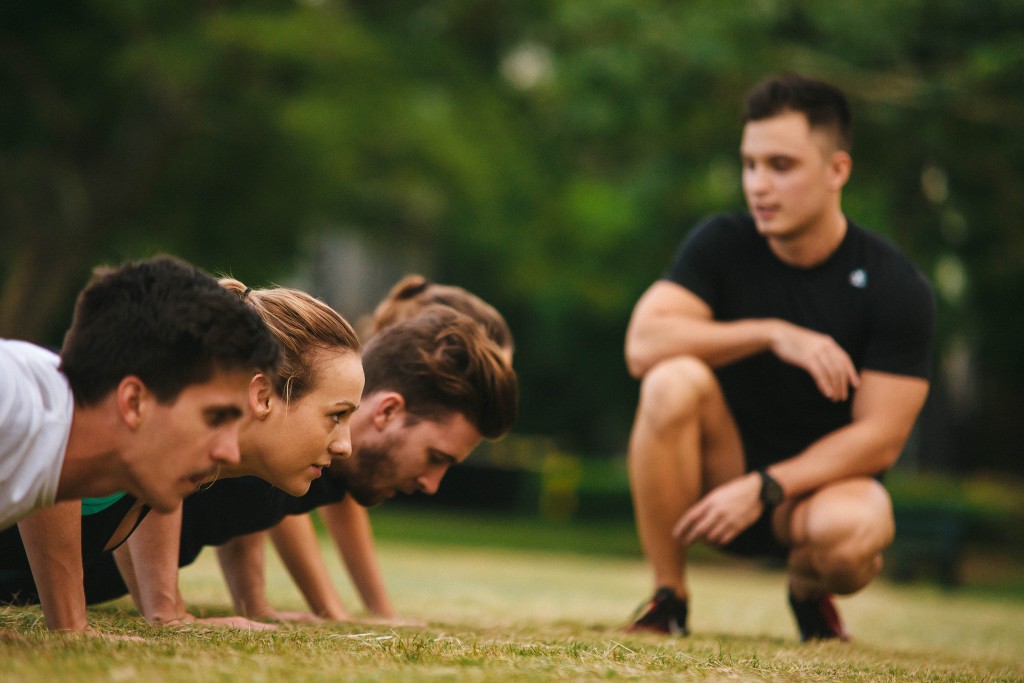
2018 is now in full swing – school holidays are officially over, the Australia Day long weekend has passed and everyone is now full steam ahead into the working year. Welcome back to a more consistent routine! With that in mind, now is the time to establish some healthy habits to get you moving towards your health and fitness goals fast. Whilst the following this isn’t rocket science, being on top of these few steps will ensure you are moving forward efficiently. Here are 5 habits to master to transform your body.
1. Moving more outside of your gym sessions
Whilst everyone’s new year goal tends to be to go to the gym more, or to eat better, when it comes to getting back in shape, something that’s often overlooked, but that is so simple to do, is to just move more in general. Aiming for 30-60 minutes of activity each day in addition to your gym or boot camp sessions ensures you are more active more often. This goal is especially beneficial for people who sit down at a desk all day. Options to move more could include going for a walk when you wake up or during your lunch break, parking further away, or simply just taking the stairs. Walking also aids in your recovery and digestion. Taking up a social sport or activity to mix things up with your normal gym routine is beneficial too given you can catch up with friends while being active.
2. Sleeping 7-9 hours per night
Sleeping more is one of the most overlooked aspects of fat loss, muscle gain and improved performance. Your body recovers primarily when sleeping, so getting some shut eye for 7-9 hours each night will give the body time to rebuild the torn muscle tissues which occur during training and ensure you are recovered adequately for whichever physical activities you may do the following day. Lack of sleep causes a drop in certain hormones (leptin) which play a key role in how ‘full’ you feel, making you more likely to consume more calories through snacking and cravings. Remember, quality counts, so limit the phone and Netflix before bedtime!
3. Controlling your portion sizes
Whilst we’ve recommended the approximate counting of calories through apps such as ‘My Fitness Pal’ in the past (which we still maintain is a useful tool to educate people on the macronutrient and calorie breakdown of different foods), calorie counting can be flawed due to the inaccuracy of food labels and the potential negative and obsessive effect it can have on your eating behaviours. So, with that in mind, try measuring portion sizes using the palm of your hand as a simple and flexible guide – this idea stems from our friends at Precision Nutrition. Aim for 80-90% of your diet coming from whole foods, with the remaining 10-20% spent on whatever you like, assuming you are eating adequate amounts of protein.
4. Increasing water intake and limiting liquid calories
Maybe you’ve read that increased water intake assists with fat loss, but it is not water per se that achieves this, but rather the effect that it may have on your drinking habits, in particular, by replacing ‘liquid calories’ you may have – such as juices, soft drinks or alcohol – with water intake. Drinking enough water per day (2-3L per day) has major health benefits. Studies have shown adequate water intake assists in the transfer of nutrients throughout the body, flushes out toxins, lubricates your joints and digestive tract, and regulates your body temperature through sweating. One particular study which was conducted a few years back showed that drinking 500ml of water increases your energy expenditure (calories burnt) by 24% (1). With this in mind, drink plenty of water before exercise and before meals as this is likely to increase your metabolism for the following hour and make you feel more full before eating.
5. Being mindful of recovery and managing stress
Being mindful of recovery is often something that is overlooked when people increase their activity levels. Above we mentioned the importance of sleep for recovery, but don’t forget that stretches and foam rolling maintains and improves your flexibility and mobility (recovery) too. Yoga is an obvious option here given you focus on not only stretching, but also the calmness of your mind through controlled breathing. Yoga also helps you mix up your exercise routine – lower intensity activities such as yoga, walking, pilates and meditation, combined with higher intensity exercises such as resistance training, conditioning and cardio provides a good mix of endorphin releasing and mindfulness exercises. Another very simple technique to help deal with stress is spending time in nature. Whether that is just by eating lunch in a park, or adding more greenery to your household or office, nature helps lower your stress hormones and heart rate, and improves your mood.
References
1. Boschmann M, Steiniger J, Franke G, Birkenfeld AL, Luft FC, Jordan J. Water drinking induces thermogenesis through osmosensitive mechanisms. J Clin Endocrinol Metab. 2007 Aug;92(8):3334-7.
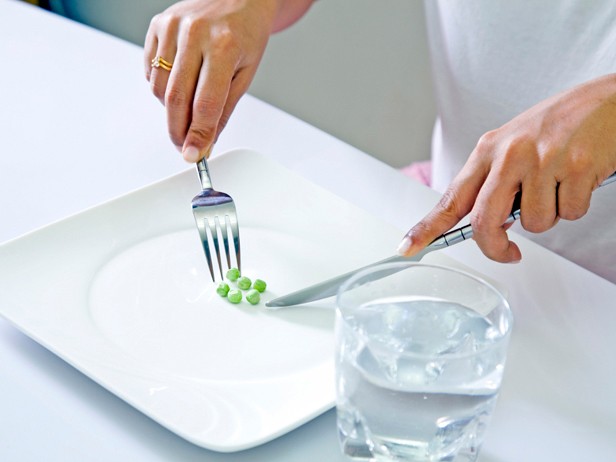
With the many diets and portion controlled meal options presented to us in this day and age, too often people are trying to sustain a diet eating far less than what is optimal for their lifestyles.
With the above point in mind, this month we share an article written by Coach Calorie which explains what can happen when you consume too little, and how much you should be eating. Without further ado:
___________________
The majority of the time when you’re having a problem losing weight, it’s not because you aren’t making good food choices. The reason why your weight loss has stagnated is because you’re not eating enough calories to lose weight.
What Happens When You’re Not Eating Enough Calories?
When most people start dieting, they slash their calories and add a large amount of exercise to their daily routine. That’s fine, but they usually cut their calories way too low. Add in the extra exercise, and all of a sudden you have an extreme calorie deficit that is working against you.
Not eating enough calories causes many metabolic changes. Your body is a smart machine and senses a large decrease in dietary energy. Your large calorie deficit might work for a few days or even weeks, but eventually your body will wake up and sound alarms that it needs to conserve energy.
It doesn’t want to just waste away. It needs that energy (fat) to survive. So, what does your body do when it senses prolonged energy restriction? Not eating enough calories…
Slows down thyroid production – Your thyroid is responsible for fat, carbohydrate, and protein metabolism, among other things. Your body has the ability to slow down thyroid output in an effort to maintain energy balance [1].
1. Decreases muscle mass – Muscle is highly calorie intensive to maintain. In a prolonged extreme calorie deficit, it is one of the first things that your body looks to get rid of, especially if you’re not providing a stimulus to keep it. Your body needs the fat, wants the fat, and the muscle can be spared. It breaks down the muscle tissue and uses it for energy.
2. Lowers testosterone levels – An important hormone for both men and women, testosterone is just one of many hormones that are affected with severe calorie restriction [2]. Testosterone is anabolic to muscle tissue. Without it, it becomes that much harder to maintain, let alone put on muscle mass.
3. Decreases leptin levels – Leptin is one of many energy regulating hormones. More importantly, it’s a “hunger” hormone that tells you whether to eat or not. High leptin levels signal that it’s OK to stop eating, while low leptin levels are a signal to eat more energy. Because of this, leptin levels decrease in calorie restricted environments [3].
4. Decreases energy levels – There are many physical actions your body takes when you’re not eating enough calories, but there are also some mental ones. Neurotransmitter production is limited, which can lead to a lack of motivation. It’s your body’s way of telling you to “slow down” – conserve your energy.
http://www.coachcalorie.com/not-eating-enough-calories-to-lose-weight/
Tracking your calories through apps such as My Fitness Pal is a great way to manage your food intake and while this is still my preferred option, this method is not for everyone. The following alternative technique requires only your hand and is explained below in this info-graphic by Precision Nutrition (PN).
Although I am a qualified PN coach, I’m of the opinion that calorie counting still has its place, which differs from PN’s opinion. But whether measuring your food intake with an app or by using the method below, the important thing to remember is tracking your food intake in some capacity will be needed if you want to start seeing results. This strategy of using your hand is a good place to start, or potentially all you need.
If you feel you need more assistance with your nutrition, contact me at james@js-pt.com.au for further options.
James

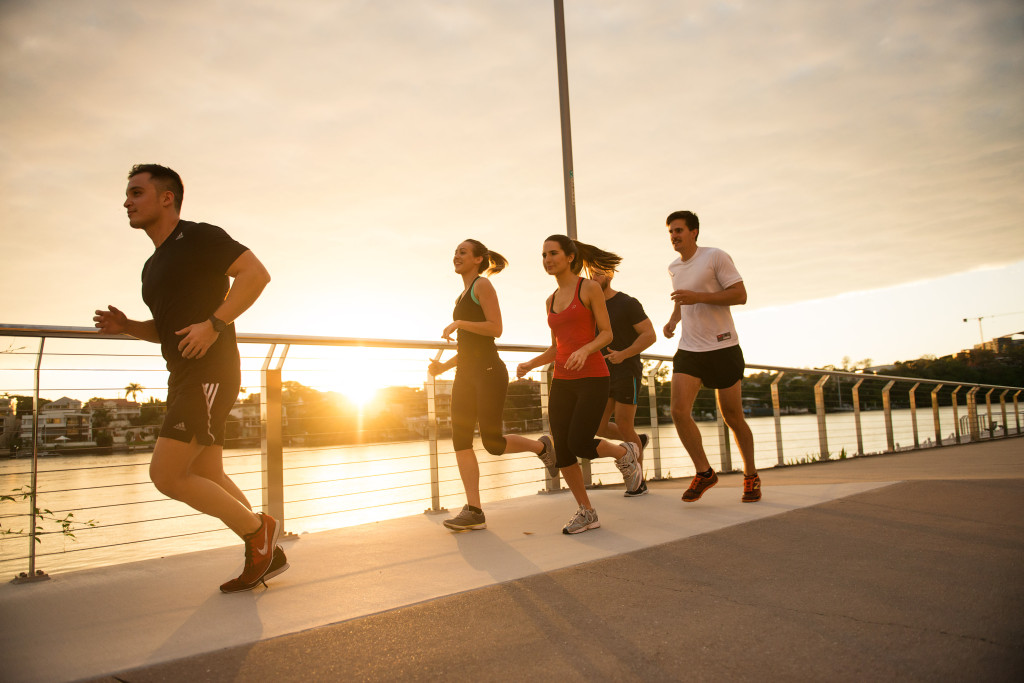 “Increasingly common, yet poorly understood. Felt intensely by the sufferer, yet often invisible to the outside world.”
“Increasingly common, yet poorly understood. Felt intensely by the sufferer, yet often invisible to the outside world.”
The above is a direct quote from an article I read recently by a former sufferer of depression, and considering an estimated 3 million Australians are living with depression and anxiety, chances are someone you know may be experiencing these feelings without you realising. There is no one proven way to help people recover from depression and anxiety, however there are a range of effective treatments, one of which is exercise.
Exercise is so much more to the human body than how you look. The profound effects of how physical activity improves your mental state should not be forgotten.
How exercise helps:
1. You are probably aware that exercise helps boost endorphins in the body, which are neurotransmitter chemicals in the brain which help diminish pain while triggering positive thoughts; this is often that feeling you have after you finish exercising. Exercise may also boost other neurotransmitter chemicals such as serotonin, which is responsible for regulating mood and some cognitive function, and is a chemical that is sometimes low in depressed people.
2.Stress has been linked to depression and anxiety, and exercise is very much considered an antidote to stress. Exercise encourages you to move more, which is immediately forcing your brain to concentrate on the physical tasks at hand, and is then followed by the release of endorphins which will trigger positive thoughts. Consistent exercise also has positive effects on your quality of sleep, something which lacks in someone suffering from depression or anxiety. Studies have shown (including this one with over 110,000 participants) that sedentary behaviour increases your risk of suffering from depression, so try to move and move often.
3. Your self esteem takes a real battering when you’re depressed, so doing something which improves you mentally as well as physically will increase your self esteem and self worth. A healthy body is first and foremost one which feels great mentally.
As was mentioned earlier, there is no one proven way to help people recover from depression and anxiety, however with the proven effects exercise has on the human body such as supporting neurotransmitters and relieving stress, consistent exercise on any level should be strongly considered as a mainstay in your lifestyle if you are suffering from the lows depression and anxiety bring.
While exercise is a very effective form of treatment in dealing with depression, sometimes people need more. If you are feeling as though you need to talk to someone, immediate support is available at Beyond Blue on 1300 22 4636, Lifeline Australia on 13 11 14, and plenty of other organisations which are listed here.














